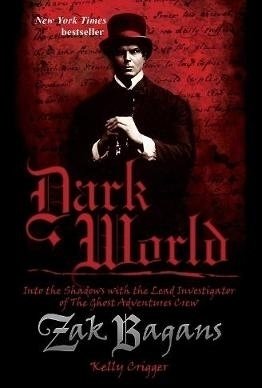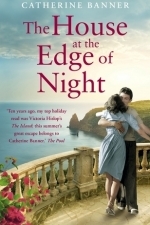Zak begins by talking about the experiences he’s had with spirits prior to the series, and explaining why his own nature led him to this danger’s-edge career path. It’s not a biography however, and in some places is more like a manual for future ghost hunters.
There is an element of progression in the book, in that it starts by concentrating on innocent spirits, which he admits make up the majority; followed by confused spirits, who are sometimes unaware that they have died. This is succeeded by chapters on angry spirits, followed by downright evil spirits, which he refers to as demons.
The book starts with less dramatic phenomena such as words being heard through a white noise generator, emotional transference, and unexplained orbs of light on camera. But this is quickly followed up by tales of pebbles and shards being levitated vertically and flung horizontally by unseen hands, and physical scratch marks on Zak’s back! Zak also comes dangerously close to being possessed!
When Zak carries out an investigation, he starts by researching the history of the buildings and accompanying remaining personalities linked to the buildings. This makes for better story-telling, both on the screen, and certainly in his book.
I am a follower of the show when it’s available in the UK, and have always been intrigued by the equipment they use. I was expecting the book to be heavily edited, and, as such lacking in this kind of detail. However I was very pleasantly surprised - Zak even goes as far as explaining which pieces of equipment are better, and why. To an extent, the book can serve as a manual for would be ghost hunters.
Zak explains the difference between residual and intelligent hauntings, and chronicles instances where the lines between the two are blurred. He also documents moments when he’s had simultaneous significant readings on several devices, and argues that that in itself provides excellent evidence of the paranormal.
The nerd that I am looked forward to the section on the scientific theories for these paranormal experiences - and I wasn’t disappointed! Several theories were put forward and they form one of the most accessible guides to scientific theories that I’ve ever read! Zak discusses how each theory fits particular experiences of his, and compares and contrasts them for different phenomena.
The book is rounded off with Zak relating his ambitions for the field of paranormal investigation, where he puts a case forward for a central repository of data. In this section, we also hear from other prominent figures in the field, with their hopes for the field, including a striking passage from Marie D. Jones.
The book has high entertainment value, but a mere book, even one written as seriously as this, won’t make a believer out of a sceptic. Its content provides essential background for a would-be ghost hunter however. A recommended read for the open-minded and curious.
Gareth von Kallenbach (980 KP) rated American Sniper (2015) in Movies
Aug 6, 2019
American Sniper sees Bradley Cooper as Chris Kyle in his second movie with “American” in the title (see 2013’s American Hustle). Most of us know the story of Chris Kyle, but for those that don’t here’s a quick rundown. Chris Kyle is the most lethal sniper in American history with 160 confirmed kills as a Navy SEAL, and another 95 probable kills. He served four tours, and wrote a book about his life. This film is based on that book. It tells the story of how he was influenced by his father, joined the military, and then went on to serve four tours while trying to balance his life at home with his wife and children. Acting as the true Sheepdog to all in his life, American Sniper looks at the struggle Kyle went through, and tells the story with passion and respect.
Cooper did a fantastic job portraying Texas-native Kyle. He was almost unrecognizable onscreen, as he put in 8 months of prep to get ready for this role, including a 4-hour a day training regime, and another two with a vocal coach. It was even said that some of Kyle’s brothers-in-arms who helped train Cooper and serve as consultants on the movie could feel his presence through Cooper at the end of training and all throughout filming. Sienna Miller was a great compliment to Cooper’s performance as Taya Kyle, Chris’ wife and the mother of his children. And not surprisingly, Clint Eastwood knocked it out of the park in this go at the Director’s chair. This is his best movie in years, though one would hope so with Chris Kyle’s father threatening to unleash hell if the memory of his son was disrespected with the film.
Mr. Kyle’s passing was a tragic event for those that knew him, and even those that did not know him. I think he may rest well knowing that this film, adapted from his own auto-biography, was handled beautifully with such passion and respect. If I have one issue with the film, it was the rapidity at which things progressed. So many different events packed into 15 minute segments with time just seemed to be rushing like a river, and glossing over parts of the story that could really have used some more build up or exploring. But such is the case when adapting a movie from a book. Though I am sure that movie-goers would not have minded lengthy the movie a bit, even with a run-time of 132 minutes.
If you see one movie this month, let it be American Sniper. If you have not heard of Chris Kyle, or his story, go see American Sniper. Hopefully, the Legend will live on through the lives he touched, and saved.

MP3 Quran- Abdurrehman Al Sudais
Education and Utilities
App
Quran Audio-Al Sudais is the ultimate Quran application for iPhone/Ipad users with Quran recitations...
Whisperin' Bill Anderson: An Unprecedented Life in Country Music
Bill Anderson and Peter Cooper
Book
Whisperin' Bill: An Unprecedented Life in Country Music presents a revealing portrait of Bill...
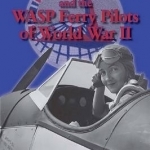
Nancy Love and the WASP Ferry Pilots of World War II
Book
She flew the swift P-51 and the capricious P-38, but the heavy, four-engine B-17 bomber and C-54...
Andy K (10823 KP) rated The People Vs. Larry Flynt (1996) in Movies
Sep 14, 2019
This time he decides to take on a subject he is passionate about through the lens of someone he doesn't particularly like. It is hard to believe the real Larry Flynt became a poster child for free speech and freedom of expression just so he could peddle Hustler magazine which showed every variety of "smut", "vile" and immoral behavior and imagery which makes most people disgusted. They even featured a cartoon depicting the characters from "The Wizard of Oz" getting it on with each other!
Larry Flynt started with his brother managing a strip club, but dreaming for something more. Larry decided he would publish a "newsletter" to increase awareness of the club. Upon publication, people became interested in viewing and subscribing to its controversial content, thus an empire was born.
From this club Larry also met his latest dancer soon to be wife, Althea.
The hits started coming almost immediately with different groups causing trouble for Larry and having him arrested. His legal battles soon began as well. His lawyer is not able to control his increasingly belligerent client who shows no respect for the court and openly mocked and disrespected it. Unfortunately, after one of his court appearances, he and his lawyer were shot by a sniper leaving Larry paralyzed from the waist down.
Larry didn't let up; however, deciding instead to take on Reverend Jerry Falwell in Hustler which would ultimately end up with his case being seen at the US Supreme Court.
No stranger to telling a keen biography (Amadeus ranks among the greatest biopics in movie history), director Forman manages to fashion a true tale with such fervor and passion, you get drawn in almost immediately. Even if you hate Larry's message and attitude, you must ultimately completely agree with his right to express it.
Woody Harrelson began getting noticed as a dramatic actor in 1994 with Natural Born Killers and continues to this day including blockbusters like Solo and The Hunger Games franchise as well as meaningful dramatic roles in recent films like Three Billboards and Game Change, Hard to believe the numskull from Cheers has blossomed into a full fledged movie star. His Academy Award nominated performance in this film is so well deserved. He is able to make Larry Flynt repulsive and sympathetic, rude and adorable as well as repugnant and charming all at the same time.
Courtney Love comes form nowhere and plays Larry's wife Althea with energy and really give it her all showing herself as the woman who would stand by her husband no matter what and up against the system. An early performance from Edward Norton is also welcome coming right on the heels of his breakout role in Primal Fear.
The courtroom scenes and not revolutionary, however, the drama and intensity are there broken up by Larry's quips and infant like behavior.
A very entertaining watch from a true master filmmaker highly recommended.
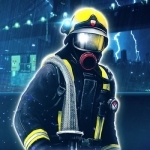
RESCUE: Heroes in Action
Games
App
Out now: The first expansion for RESCUE: Heroes in Action: Rising Storm with new vehicles and...
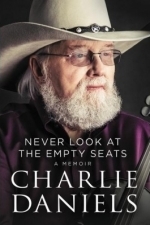
Never Look at the Empty Seats: A Memoir
Book
A tale of hard work, musical discovery, and faith, Charlie Daniels’s journey has been one of a...
Music biography
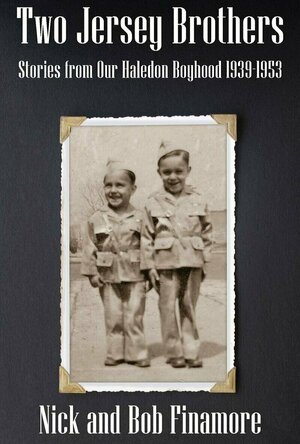
Two Jersey Brothers: Stories from Our Haledon Boyhood 1939-1953
Book
Two Jersey Brothers recounts the boyhoods of brothers Nick and Bob Finamore in the small, quiet,...
memoir biography bookbuzz
Hazel (1853 KP) rated The House at the Edge of the Night in Books
Oct 20, 2017
Castellamare, a small island off the south coast of Italy, is the perfect setting for a captivating epic tale that traces a family from the beginning of the 1900s until the more recent year of 2009. Centred at the island’s only bar ‘The House at the Edge of the Night’, the island inhabitants suffer through two world wars, fascism, tourism and recession, however, the bar determinedly stays standing. But what happens in the rest of the world is largely ignored by the island dwellers that prefer to come to the bar to learn about friendships, betrayals and love affairs.
The House at the Edge of the Night begins on the mainland where the Dr Esposito removes the foundling Amadeo from care. Following in his foster father’s footsteps, Amadea Esposito trains to be a doctor and eventually lands himself a position on Castellamare. Having never had a doctor on the island before, Amadeo is welcomed by almost everyone, however, an illicit affair puts an end to his career. Fortunately, The House at the End of the Night provides Amadeo with an income and a home for his new wife, Pina, and his four children.
The story takes the reader through the Second World War, something that is interesting to read from the Italian’s point of view. Rejecting fascism, the Islanders are enraged when their boys are called up to join the war, especially as many, including Amadeo’s three boys, never return. With only a daughter, Maria-Grazia, remaining, the Esposito’s keep the bar going for lack of anything better to do.
But war brings good things as well as bad. Washed up on sure, the British soldier Robert brings good luck to the superstitious villagers, eventually marrying the lovely Maria-Grazia. The story continues through the childhood of their unruly boys, coming to an end as their granddaughter reaches adulthood.
A doctor and a barman, Amadeo also had a love for stories. Listening to his patients and patrons fantastical tales, Amadeo keeps note of them all in his personal notebook. Split into five parts, the book contains a story at the beginning of each section that, although mythical, set the scene for the subsequent narrative.
Alienated from the rest of the world, the Islanders are stuck in their ways, attributing any luck – good and bad – to their patron saint, Sant’Agata. Whenever life gets tough, the people on Castellamare turn to prayer, which although is part of their Catholic faith, often comes across as superstitious and irrational. They refuse to believe any logical explanation, preferring to regard their island as a magical, preternatural site.
There is no specific storyline with the usual climax and conclusion; instead, it works as a biography of a fictional family. It is interesting to regard the impact of the rapidly developing world on the island, from the introduction of a building society and the eventual launch of the Europe – something that the Islanders are naturally against. The inhabitants of Castellamare come across as naïve, but their backgrounds and beliefs are far more interesting than the average person.
The House at the Edge of the Night is a story of stories. It provides more than to be expected from a novel. Catherine Banner writes of beautiful settings, compelling characters and fascinating events that both amuse and entertain in a moving way.
With Victoria Hislop’s novels such as The Island being all the rage amongst many female readers, Catherine Banner’s The House at the Edge of the Night is destined for success. It is a great book to read on holiday or at home, and perfect for book clubs. This book is the ideal escape from the stresses of everyday life.
